Do you have a question about the Panasonic TX-29PS11P and is the answer not in the manual?
Covers risks of electric shock, fire, and accessibility of live parts.
Guidelines for cleaning the TV and handling the screen to prevent damage.
Ensures proper airflow and advises on responsible disposal of materials.
Warns about potential screen burn-in from prolonged use of games/computers.
Explains the automatic standby function after 30 minutes of inactivity.
Details essential documentation included with the television.
Lists the remote transmitter and required batteries for operation.
Provides instructions for correctly fitting batteries into the remote control.
Step-by-step guide for connecting external devices like satellite receivers or VCRs.
Instructions for plugging in the TV and ensuring the VCR is in standby mode.
Guides users through selecting their country and preferred OSD language.
Initiates the automatic search and storage of available TV channels.
Details connecting and setting up Q-Link compatible VCRs or DVD recorders.
Introduces correction for picture tilt and colour purity issues.
Step-by-step guide to adjust picture tilt using menu options.
Explains how to use cursor controls for volume and programme selection.
Details functions of buttons and sockets located on the TV's front panel.
Explains the purpose of each button on the provided remote control.
Visual representation of the TV's menu system and its main categories.
Options for adjusting picture aspect ratio (e.g., Auto, 4:3, 16:9).
Access to AV settings, Teletext, Q-Link, and other system configurations.
Features for station tuning, editing, and system settings.
Instructions for using the MENU button and cursor keys to select options.
Guides on modifying settings like Contrast, Brightness, and Off Timer.
Explains resetting settings and retaining the last used configuration.
How to select and display different picture aspect ratios automatically or manually.
Features for zooming and adjusting the picture horizontally and vertically.
Allows the user to freeze the current video image at any time.
How to open and navigate through Viewing Mode, Picture, Sound, and Setup menus.
Selecting screen settings like Dynamic, Normal, and Cinema.
Understanding the function of Picture and Sound menus for adjustments.
Overview of advanced features and tuning access via the Setup menu.
Customizing screen settings for different viewing conditions.
Detailed controls for fine-tuning picture quality parameters.
Adjusting overall colour tone and activating picture noise reduction.
Managing settings independently for various input sources (RF, AV).
Adjusting audio levels and speaker output for optimal sound.
Selecting stereo/mono modes and sound profiles (Music/Speech).
Applying spatial effects to simulate a more immersive audio experience.
Setting AV outputs, Teletext modes, and off-timer.
Enabling Q-Link and selecting character sets for Teletext.
Entry point to programme editing, auto/manual tuning, and colour system.
Choosing display language and correcting picture tilt or colour patches.
Accessing station management and automatic channel tuning features.
Detailed procedures for manually tuning individual channels.
Setting transmission standards and adjusting volume per station.
Using the AV2 input for scrambled signals or decoder connection.
Interface for viewing and editing programme details like name, lock, and system.
Steps to remove specific channels from the programme list.
Procedures for inserting new channels and rearranging existing ones.
Detailed steps for manually tuning a specific channel number.
Editing channel names and setting parental locks for channels.
Selecting appropriate video standards (PAL/SECAM) for channels.
Using Q-Link to transfer tuning information to compatible VCRs or DVD recorders.
Guide to automatically retune the TV for local stations after moving regions.
Choosing the correct country to ensure accurate channel scanning.
Monitoring the tuning process and final channel display.
Using the menu to manually select and tune programme positions.
Steps for finding and saving desired channels manually.
Using the TV's physical buttons for tuning, searching, and storing stations.
Selecting the preferred language for menus and on-screen messages.
Connecting and activating Q-Link for TV-VCR/DVD interaction.
Using the DIRECT TV REC button to record the current channel via Q-Link.
Interpreting messages related to recording progress, source changes, or errors.
Ensuring TV and VCR/DVD have synchronized tuning information.
How Q-Link manages power states between the TV and VCR/DVD.
Instructions for turning off the Q-Link feature if not needed.
Using the remote for standby, playback, stop, and switching between VCR/DVD modes.
Functions for fast forward, rewind, skip, pause, and review.
Initiating recordings and changing programme positions on the VCR/DVD.
Understanding LIST and FASTEXT modes and how to navigate pages.
Using Reveal, Full/Bottom, and coloured buttons for enhanced Teletext use.
Freezing pages, storing favourites, and viewing news/updates.
Accessing specific pages within Teletext broadcasts.
How to switch between different audio/video input sources.
Connecting headphones, S-Video, and RCA devices to the front.
Details on connecting equipment via rear SCART, RCA, and S-Video ports.
Detailed pin assignments for the 21-pin SCART terminals.
Explanation of the S-Video connection for luminance and chrominance.
Diagnosing and resolving common issues like snowy pictures, interference, or no colour.
Addressing issues such as noisy sound, no sound, or weak audio output.
Basic checks for aerial connection, interference, and settings.
Key physical and electrical characteristics of the television.
Information on supported TV broadcast standards and frequencies.
Details on available aerial, audio, and video connections.
Covers risks of electric shock, fire, and accessibility of live parts.
Guidelines for cleaning the TV and handling the screen to prevent damage.
Ensures proper airflow and advises on responsible disposal of materials.
Warns about potential screen burn-in from prolonged use of games/computers.
Explains the automatic standby function after 30 minutes of inactivity.
Details essential documentation included with the television.
Lists the remote transmitter and required batteries for operation.
Provides instructions for correctly fitting batteries into the remote control.
Step-by-step guide for connecting external devices like satellite receivers or VCRs.
Instructions for plugging in the TV and ensuring the VCR is in standby mode.
Guides users through selecting their country and preferred OSD language.
Initiates the automatic search and storage of available TV channels.
Details connecting and setting up Q-Link compatible VCRs or DVD recorders.
Introduces correction for picture tilt and colour purity issues.
Step-by-step guide to adjust picture tilt using menu options.
Explains how to use cursor controls for volume and programme selection.
Details functions of buttons and sockets located on the TV's front panel.
Explains the purpose of each button on the provided remote control.
Visual representation of the TV's menu system and its main categories.
Options for adjusting picture aspect ratio (e.g., Auto, 4:3, 16:9).
Access to AV settings, Teletext, Q-Link, and other system configurations.
Features for station tuning, editing, and system settings.
Instructions for using the MENU button and cursor keys to select options.
Guides on modifying settings like Contrast, Brightness, and Off Timer.
Explains resetting settings and retaining the last used configuration.
How to select and display different picture aspect ratios automatically or manually.
Features for zooming and adjusting the picture horizontally and vertically.
Allows the user to freeze the current video image at any time.
How to open and navigate through Viewing Mode, Picture, Sound, and Setup menus.
Selecting screen settings like Dynamic, Normal, and Cinema.
Understanding the function of Picture and Sound menus for adjustments.
Overview of advanced features and tuning access via the Setup menu.
Customizing screen settings for different viewing conditions.
Detailed controls for fine-tuning picture quality parameters.
Adjusting overall colour tone and activating picture noise reduction.
Managing settings independently for various input sources (RF, AV).
Adjusting audio levels and speaker output for optimal sound.
Selecting stereo/mono modes and sound profiles (Music/Speech).
Applying spatial effects to simulate a more immersive audio experience.
Setting AV outputs, Teletext modes, and off-timer.
Enabling Q-Link and selecting character sets for Teletext.
Entry point to programme editing, auto/manual tuning, and colour system.
Choosing display language and correcting picture tilt or colour patches.
Accessing station management and automatic channel tuning features.
Detailed procedures for manually tuning individual channels.
Setting transmission standards and adjusting volume per station.
Using the AV2 input for scrambled signals or decoder connection.
Interface for viewing and editing programme details like name, lock, and system.
Steps to remove specific channels from the programme list.
Procedures for inserting new channels and rearranging existing ones.
Detailed steps for manually tuning a specific channel number.
Editing channel names and setting parental locks for channels.
Selecting appropriate video standards (PAL/SECAM) for channels.
Using Q-Link to transfer tuning information to compatible VCRs or DVD recorders.
Guide to automatically retune the TV for local stations after moving regions.
Choosing the correct country to ensure accurate channel scanning.
Monitoring the tuning process and final channel display.
Using the menu to manually select and tune programme positions.
Steps for finding and saving desired channels manually.
Using the TV's physical buttons for tuning, searching, and storing stations.
Selecting the preferred language for menus and on-screen messages.
Connecting and activating Q-Link for TV-VCR/DVD interaction.
Using the DIRECT TV REC button to record the current channel via Q-Link.
Interpreting messages related to recording progress, source changes, or errors.
Ensuring TV and VCR/DVD have synchronized tuning information.
How Q-Link manages power states between the TV and VCR/DVD.
Instructions for turning off the Q-Link feature if not needed.
Using the remote for standby, playback, stop, and switching between VCR/DVD modes.
Functions for fast forward, rewind, skip, pause, and review.
Initiating recordings and changing programme positions on the VCR/DVD.
Understanding LIST and FASTEXT modes and how to navigate pages.
Using Reveal, Full/Bottom, and coloured buttons for enhanced Teletext use.
Freezing pages, storing favourites, and viewing news/updates.
Accessing specific pages within Teletext broadcasts.
How to switch between different audio/video input sources.
Connecting headphones, S-Video, and RCA devices to the front.
Details on connecting equipment via rear SCART, RCA, and S-Video ports.
Detailed pin assignments for the 21-pin SCART terminals.
Explanation of the S-Video connection for luminance and chrominance.
Diagnosing and resolving common issues like snowy pictures, interference, or no colour.
Addressing issues such as noisy sound, no sound, or weak audio output.
Basic checks for aerial connection, interference, and settings.
Key physical and electrical characteristics of the television.
Information on supported TV broadcast standards and frequencies.
Details on available aerial, audio, and video connections.
| Screen Size | 29 inches |
|---|---|
| Display Technology | CRT |
| Aspect Ratio | 4:3 |
| Sound System | Nicam Stereo |
| TV Standard | PAL |
| Inputs | Composite |

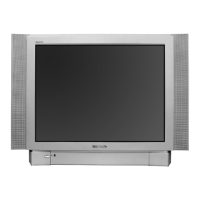

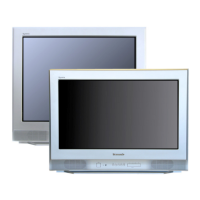
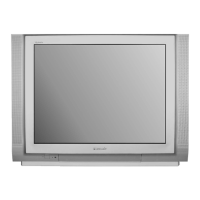
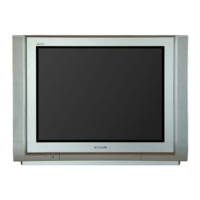
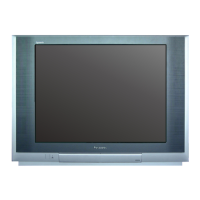
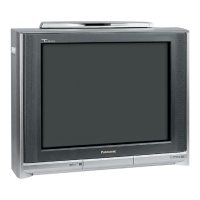
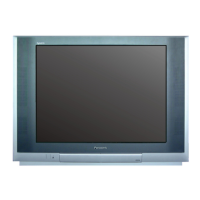
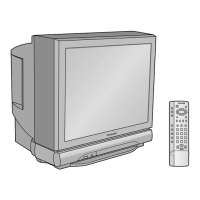
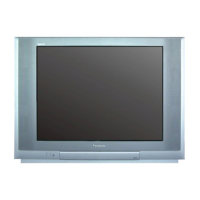

